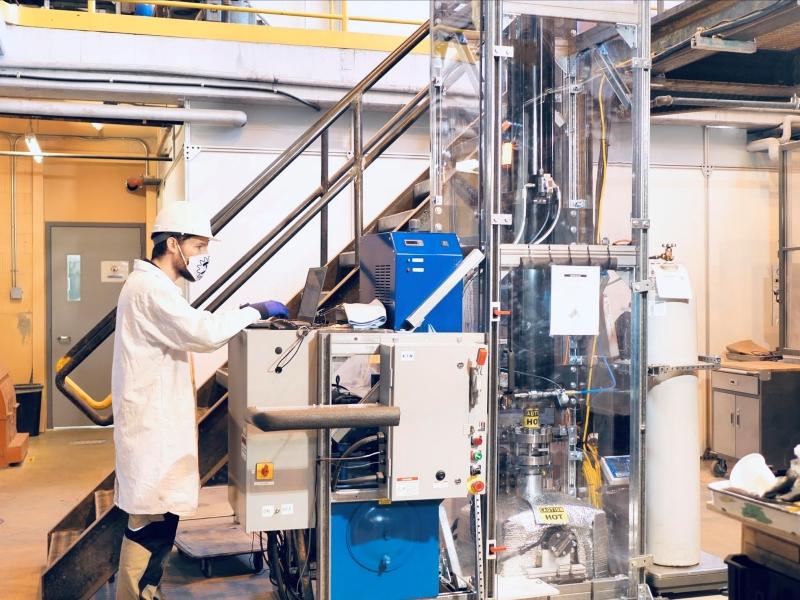
GUEST SUBMISSION: Heavy-duty vehicles, including trucks and buses, make up about 10 per cent of all motor vehicles globally, but produce around 50 per cent of the carbon dioxide emissions and over 70 per cent of vehicle particulate pollution.
Understandably, there is excitement in the potential transition of heavy-duty vehicles off diesel and toward a cleaner, electric operating system. In fact, two weeks ago, the Tesla Semi finished its first 805-kilometre (500-mile) trip on a single charge, carrying a full load of potato chips to Pepsi Co.
I bring up the cargo because while the total weight of the load was 81,000 pounds, there was no breakdown of cargo weights; potato chips are very light, yet require space, allowing for a “full load” while also allocating valuable pounds to the extremely heavy electric battery - I’ll dig into this further in the article.
While striving for ambitious ESG targets in this (and every) industry is needed and supported, it’s unlikely that electrical transport vehicles will carry this load in the near term for the following reasons:
1. Truck stops & the grid
A recent article was released by Bloomberg titled Electric Truck Stops Will Need as Much Power as a Small Town. As it currently stands, the grid does not support the transition to large-scale electric vehicle use, particularly when looking toward the trillion dollar North American trucking industry.
Electricity distribution relies on substations that serve small surrounding areas. If one point suddenly outstrips a substation’s capacity, it can cause outages, rolling blackouts and forced rationing due to a lack of adequate infrastructure for the area. The reason truck stops pose such a risk is because of the rate of electricity consumption that would be required from one location.
Electric transport trucks are essentially gigantic 18-wheeled batteries. If electricity was likened to water flowing, the hose would need to be the size of a water cannon as opposed to a garden hose, to refuel these batteries in a reasonable timeframe. Essentially, a few of these trucks charging concurrently at a truck stop would be comparable to the electricity load drawn by a small town.
Presently, it may take three to four hours to recharge a 1,000-kWh battery (the estimated battery size of the Tesla Semi) versus only 15 to 20 minutes to refuel a diesel truck. To counteract this, Tesla has created the 'Megacharger' which promises to provide the Semi with up to 400 miles of charge in just 30 minutes.
However, this technology is designed to have a charging output close to 1.5-mWh at peak load. In other words, one Tesla Semi will consume in 30 minutes about as much electricity as the average North American home does in one month.
Until a network of supercharger stations are available that can accommodate these demands, it is likely that the sales of electric semis will be confined to those completing local routes (trucks making deliveries within the “single charge” range and refueling at a local hub). Once the shorter routes are tackled successfully, battery technology improves, and researchers learn what infrastructure is needed, electrifying longer routes becomes more feasible.
2. Battery weight will determine hauling capacity
There's a basic physics problem with electric trucks that goes straight to operators' bottom line.
Legally, there is a roughly 80,000-pound (40-ton) overall weight limit for trucks to prevent damage to roads and bridges. Hauling a fully-loaded 18-wheel tractor down the highway requires a lot of electricity, but batteries are big, heavy and expensive. The larger the battery, the less cargo the truck can carry. Simultaneously, the heavier the cargo, the shorter the driving range, all of which affects profitability.
The payload to battery weight equation will determine the range a truck has without having to stop to charge for hours, the weight of goods that can be transferred (payload), and ultimately, the returns.
You can either cover a greater range but carry a smaller payload, or have a lighter battery pack (which requires that you sacrifice range) to carry more cargo. This trade-off doesn’t make business sense when comparing electric trucks to diesel trucks, which can carry over 20 tons with a range of 900 miles — triple the 300-mile and double the 500-mile range of the two Tesla Semi variants.
Ultimately, less cargo and range usually means less profit, particularly in the long-haul category. Electric trucks can make sense, but more so for shorter runs or smaller loads in the near term.
3. Industrial real estate ramifications
Industrial real estate developers say they have been receiving more requests to install charging stations at distribution centers. Logistics companies are trying to get ahead of this shift amid elevated fuel prices and a drive to rein in carbon emissions.
(Fun fact, California recently mandated that all new cars and light-duty trucks sold in the state must be zero-emissions vehicles by 2035, with the same rule applying to heavy-duty trucks by 2045.)
Because the current infrastructure is not set up to support this transition, as I outlined above, and because the margins and demands involved in shipping operations, where unexpected or lengthy downtimes for charging can disrupt supply chains, more companies are seeking out solutions at their own facilities.
What this requires is ensuring there is enough power and space available for trucks and vans to charge up without impeding freight-handling operations. Surface space needs to be set aside on site, permits must be secured and a building’s electricity must be upgraded to meet the gargantuan charging demands.
One example is warehouse giant Prologis, which designed and built two charging stations that have a combined 4 MW of charging capacity for Danish freight giant and tenant, Maersk, at an Los Angeles County facility. While financial details were not fully divulged, Prologis said such projects are generally in the millions of dollars to build, hinting at the exorbitant costs this transition will put on businesses.
Further food for thought will be the potential resizing of the tractor due to less mechanical components, and potentially less driver space in the future. This minor adjustment allows warehouses to decrease dock door and loading dock sizes, resulting in more usable space in the facility.
This change may also reduce the turning radius needed for commercial trucks, which could translate to smaller parking and circulation areas, potentially resulting in more square footage available for lease in industrial parks. Additionally, a host of slightly smaller land parcels could suddenly become viable for accommodating industrial facilities.
Concluding thoughts
Driving what Tesla CEO Elon Musk calls "the most badass rig on the road" doesn't matter to commercial truck operators, who are worried about hitting tougher emissions targets, trusting long-term reliability, and bearing the total costs of electric tractor ownership.
Other technologies, including natural gas, hydrogen fuel cells and even a proposal to use cleaner-burning, plant-based fuels in traditional diesel engines could offer better solutions. The recent news about nuclear fusion also gets me very excited; the potential for this fuel source will be transformational for all industries.
As it stands, the current outlook for electric transport vehicles is optimistic for last mile delivery (from warehouses to stores and homes), low density cargos (like potato chips, pillows, apparel), and flatter routes (think desert versus mountain). This low hanging fruit is where this technology will gain traction in the immediate term.
Where it goes from there will require thought leadership, innovation, and a reality check as to how we are powering all these green electric vehicles. It is not solar . . . but it could be nuclear one day.
Editor's note: This guest submission was originally published on Bronwyn Scrivens' blog, and is republished with permission.










